Following email deliverability best practices – although it might be a lot of work at times – is just one side of the coin.
If you want to maximize the chances of your emails landing in a prospect’s main inbox, you need to also keep good track of how your emails are performing.
And what better way to do that than by keeping an eye on email deliverability metrics?
Let’s take a closer look at which you should be focusing on.
Why is email deliverability so important?
Without good deliverability, your email campaign won’t reach your target audience, your recipients won’t have a chance to read and consider your offer, and your efforts will turn out to be in vain.
Your goal is to reach the recipient’s inbox – not the spam or junk folder.
Tracking key metrics will help you to keep your hand on the pulse of your deliverability.
So without further ado, let’s move on to every analytics geek’s dream: the metrics.
Deliverability metrics you should focus on
1. Delivery rate
This one is easy to measure. Email delivery rate is the percentage of emails that were successfully delivered to recipients’ inboxes, i.e. they didn’t bounce.
You can see the metric in your Woodpecker stats (as delivered), or better yet – track your deliverability on a dashboard that you’ll find in the Deliverability tab.
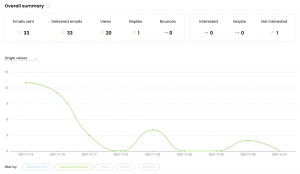
The feature (Deliverability Monitor) allows you to spot possible issues with your deliverability so you can prevent them.
It tracks how many emails you sent, how many were delivered, opened, replied to, and how many bounced.
See how the feature works and what to do if you see that something might be up with your deliverability.
2. Inbox placement rate
Most people use it interchangeably with the term deliverability rate.
Inbox placement rate (IPR) determines the percentage of emails that were delivered to the recipient’s main inbox rather than the spam or junk folder.
You can assess your inbox placement rate with tools such as GlockApps (you test it by sending your emails to a seed list).
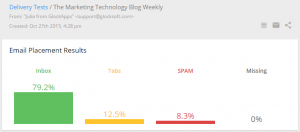
source: GlockApps
A low inbox placement rate may mean that:
- the content you sent is irrelevant
- you have a bad IP or domain reputation
- you’ve sent messages to invalid email addresses
You can increase your IPR by following these few steps:
- maintain proper prospect list hygiene: always validate email addresses (you can do it with Bouncer), group your target, delete inactive contacts, and engage with prospects to warm them up before outreach
- monitor your bounce rate
- check and improve the reputation of your domain and email server (you can do this with a tool like Talos)
- don’t send any email until you have resolved the issues with deliverability
3. Spam placement rate
Spam placement rate is the number of emails delivered to spam folders, either flagged as spam by humans or Internet Service Providers (ISPs).
If you use GlockApps to test your inbox placement, you’ll also see an estimated spam placement rate – it’s marked in read on the screen above.
As to the reasons – there are many factors that can push your emails into spam. Apart from the recipients manually marking your messages as spam, some of these include:
- your DKIM or SPF is not set up properly
If you’re a Woodpecker user and you’d like to check if you’re good to go with these records, you can do so in the app:
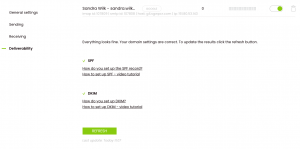
- you’re not personalizing your messages
- you’re sending them all at once
- you’ve used spam-triggering words in the email copy
Mail-Tester can help you to check (among other things) if any spam words made their way into your email.
Check this article to see how to avoid the SPAM folder>>
4. Hard bounces & soft bounces
In general, a bounced email is an email that couldn’t be delivered to the recipient.
In Woodpecker you can see them in the bottom left corner of the stats view:
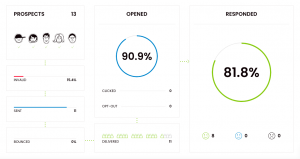
Hard bounces are caused by permanent reasons, for example, if the address doesn’t exist, the server has blocked you or blocked delivery in general.
You need to clean hard bounced emails from your email list immediately either manually or automatically. If not, your domain will be flagged as spam.
A soft bounce is a temporary issue by the recipient’s server side, such as a full mailbox or an oversized message file that couldn’t be delivered.
If an email address continues to soft bounce, it will end up being considered a hard bounce and you will need to remove it from your list.
You can get in-depth info on email bounces from this article:
Why Emails Bounce Back: 10 Most Common Issues>>
5. Engagement rate
This metric specifically determines inbox placement. Engagement rate is the percentage of recipients who interacted with your email in some way.
The good news is, you can fix a low engagement rate. This blog post describes how you can improve it:
How to Improve Your Cold Email Engagement Rate and Avoid SPAM Filters>>
6. Open rate
Open rate is the simplest email marketing KPI and the success of your cold email campaigns depends on it (right after the emails landing in a prospect’s main inbox, that is).
Most email campaigns in 2021 reached an open rate of a little over 24%. Out of every 100 emails sent, only 24 were actually opened.
7. Complaint rate
Spam complaints happen when the recipients see your email as irrelevant or annoying and report it as spam. And no one is safe from getting such complaints, even if you’re doing everything by the books.
The complaint rate is the number of people who reported your email as spam out of the total number of messages you’ve sent.
Most common way recipients can report email as spam is by clicking the “report spam” or “this is spam” button in their inbox. Beside that, the recipient can email spam agencies (for example SpamCop) or use the Microsoft Spam Fighters Program.
You can prevent a high complaint rate by:
- providing value to the recipients
- sending relevant, personalized messages
- adding an unsubscribe link to get your contacts to unsubscribe from your list instead of marking your message as spam
8. Spam trap rate
Spam traps are used by major Internet Service Providers (ISPs) or anti-spam organizations to identify spammers.
Spam traps look like real email addresses, but they don’t belong to real people. Unfortunately, even a well designed email can end up in a spam trap, affecting your sender reputation and email deliverability.
Read more on the topic in Sandra’s article about spam traps>>
You can’t really track this metric, but you can avoid entering a spam trap by building quality prospect lists (and not buying ready ones), using email validation tools before sending out the campaign, and cleaning your prospect list.
How to take care of your email deliverability?
Some time ago, Cathy wrote an in-depth article with 14 deliverability checks to carry out before sending your cold email campaign.
Here’s what you need to pay attention to.
- once you have a new domain and newly set up outbound email accounts, you need to warm them up
- there are several free tools on the web that you can use to assess the reputation of your domain and the IP of your SMTP server
- add SPF & DKIM to your email server configuration to make sure you don’t look like a spammer to other email servers
- each email provider provides its own messages limits
- the words, images, and links in your emails may alarm spam filters
- none of the parts of your email should include spam triggers words
- personalization boosts your deliverability
- don’t track links and opens if you don’t need to. If you do it, do it right
- plain text emails look more natural to spam filters
- you can use a plain-text signature, but make sure the html of the signature is neat and well-organized
- take care of the quantity and quality of your contact list
- prepare a campaign for a specific target group
- don’t buy ready-made lists of prospects including thousands of records
- your emails should be addressed to individuals at a company
What tool will strengthen your efforts to keep top email deliverability?
One that:
- has a deliverability-oriented sending algorithm
- checks for you if the email addresses on your list are valid. Best if it does it in real-time – like Woodpecker (courtesy of the natively integrated Bouncer)
- allows you to easily see if your SPF and DKIM records are set up correctly (as a Woodpecker user you can do so straight in the app)
- warns you when you’re trying to exceed your email provider’s sending limits (while setting a Woodpecker campaign, users see a notification when they’re going to break the limit)
What’s in it for you?
Email deliverability is a complex topic and it might seem scary or annoying to figure it all out.
But with the combination of email deliverability best practices, monitoring how your campaigns are performing, and using a tool geared to the best deliverability, your emails will get delivered straight to your prospect’s inbox.
Check also our free Deliverability 101 guide if you feel like diving deep into the topic of email deliverability.
READ ALSO
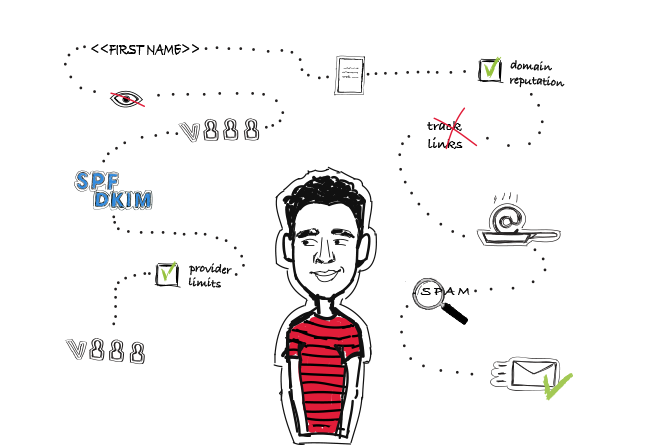
14 Deliverability Checks to Carry Out Before Sending Your Cold Email Campaign
You can have control over your cold email deliverability. In outbound outreach, it's crucial how many of the emails you sent actually get to your prospects' inboxes. There are at least 14 points on a deliverability checklist that you can, and should, go through before you start off your email campaign. I've listed them below in three categories. Some of them you may already know of, but some may be new for you. Check the list and see if you're doing everything you can to ensure that your cold emails actually get to their destination.
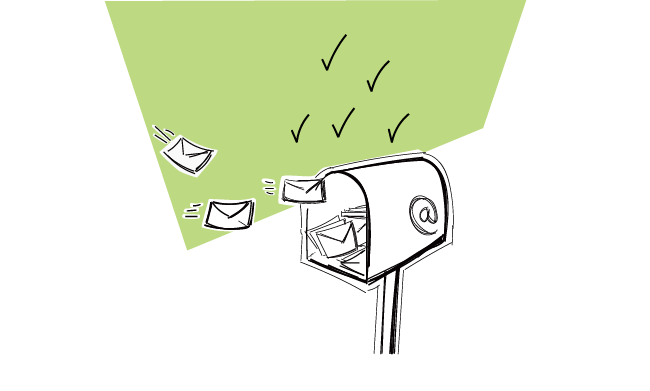
How & When to Test Email Deliverability? List of Tools & Alternatives
Are you taking good care of your cold email campaigns’ delivery rates? There are a few tools our team uses to help Woodpecker customers test email deliverability and improve it. In this post, we share this list with you and explain how & when you can use email deliverability tools by yourself.

How Does Personalization Affect Cold Email Deliverability?
I've already written a few pieces on personalization in cold email. I've given numerous reasons why personalization is a must. Yet, here's another one: deliverability of your cold email campaigns. This is something you can't just ignore or omit, because if you do – your emails will simply stop being sent. Here's more about the link between personalization and deliverability. Check how it works and how to personalize your cold email campaigns to make sure your emails get sent and delivered.

